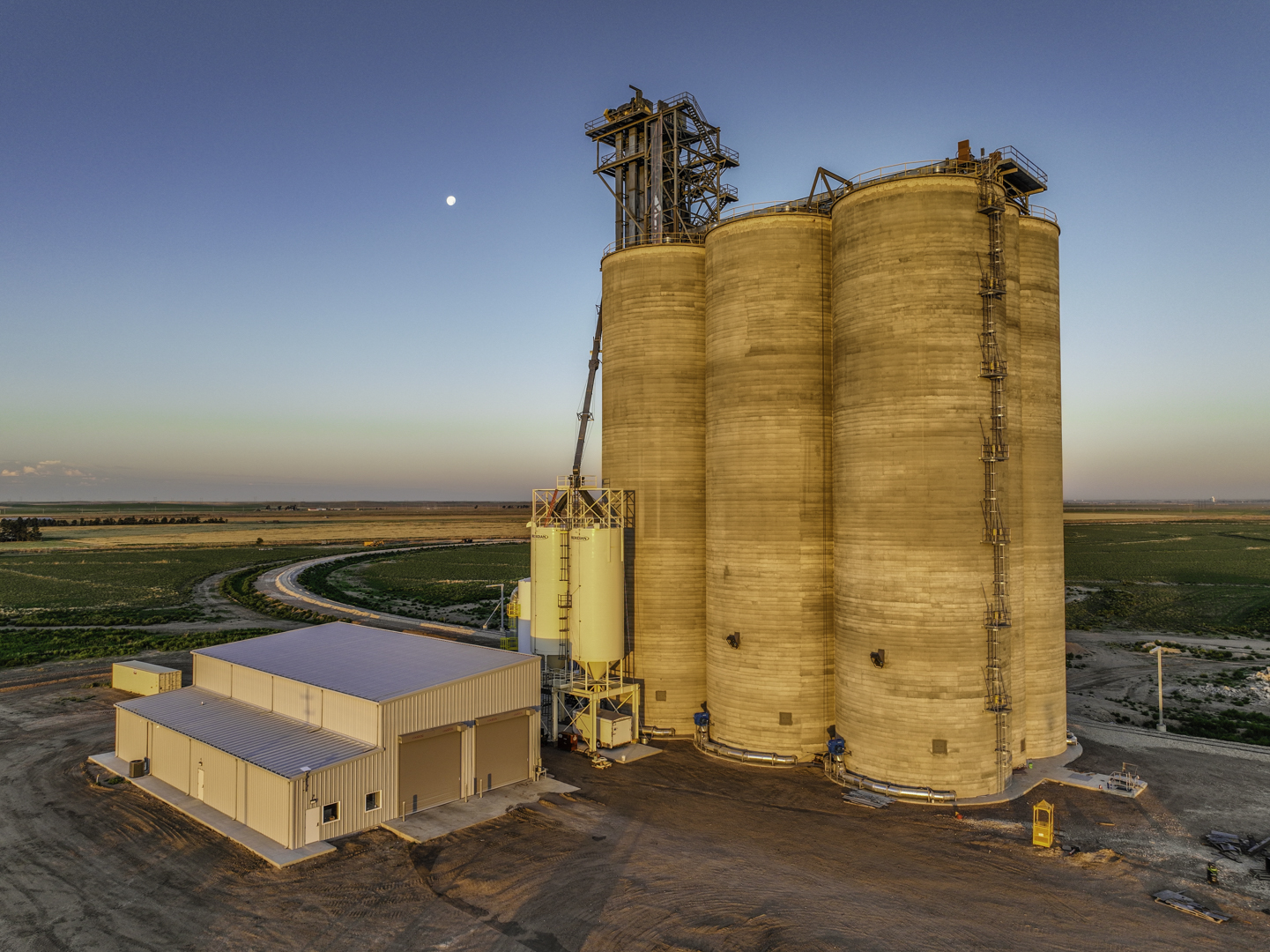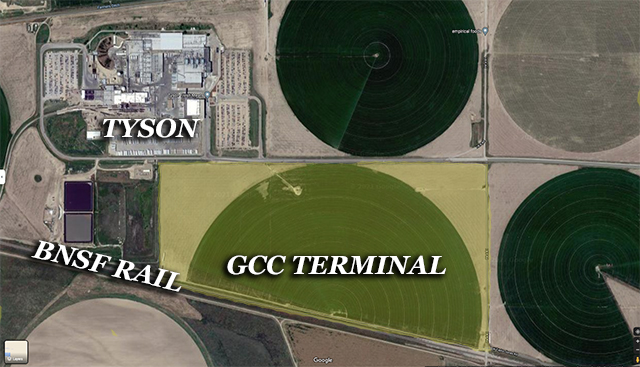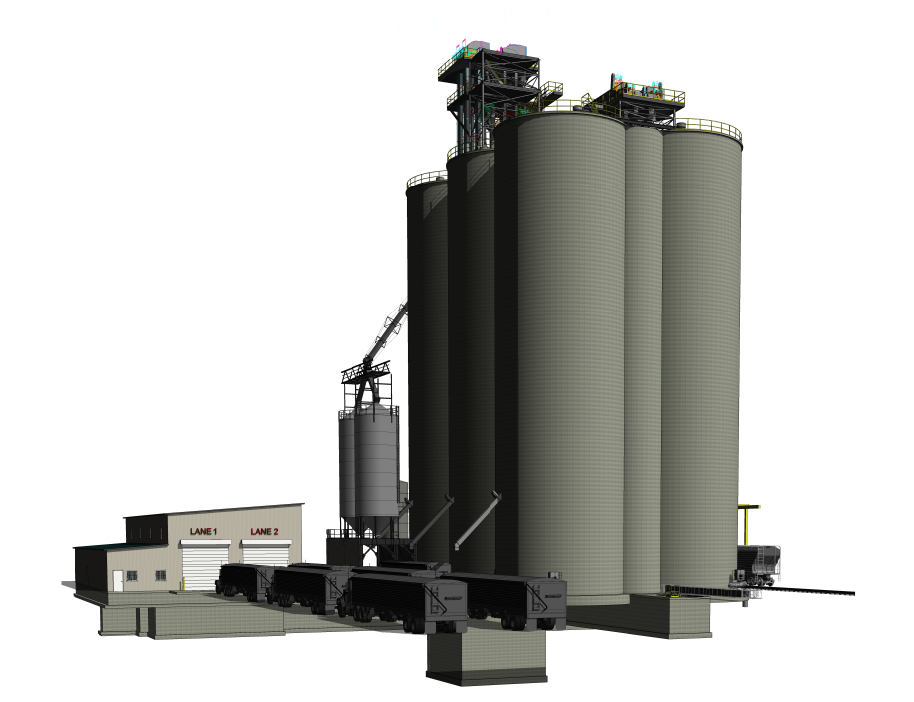
This terminal consists of a loop track rail system.
The locomotive never has to be detached from the train when loading or unloading, which reduces the time it spends at an elevator compared to conventional grain terminals.
RIVER VALLEY TERMINAL
This grain project for GCC has had many iterations and challenges to be able to come to fruition. The goal has always remained the same, though, to create more value for GCC farmer members.
GCC has completed all necessary steps to commence construction of its planned new shuttle loader facility to be constructed Northwest of Holcomb, Kansas.
Constructing the rail terminal at this location will keep truck traffic on US-50/400 and utilize IBP Road as the access road away from Holcomb.

Terminal Proposed Site

3D Rendering of GCC Terminal
CONSTRUCTION PROGRESS
FACT SHEET
GCC Rail Project Key Concepts
- GCC will build a grain facility that allows for grain export/import by rail
- GCC has agreements with the BNSF Railroad for mainline rail access
- The facility will be a slip-form “six pack” concrete elevator with 1.1 million bushels of storage capacity
- It will have two truck-receiving lanes
- It will be capable of loading trains at 80,000 bushels an hour but will usually not utilize its maximum loading capacity
- It will also be capable of unloading trains when import economic conditions are allowed
- The facility will utilize a dust collection system and meet all Clean Air Permit requirements
- The facility will handle Grain Shuttles which are unit train quantities (110-116 rail cars)
- The train cars will stay connected the whole time and never be disconnected from BNSF engine power
- The facility will receive grain from the surrounding elevators via truck
- The facility will operate on a planned Monday-to-Friday schedule
- Daily truck volume will vary depending on train arrival times, grain volume moving through the facility, and harvest seasonality
- On average, the facility will receive 70 trucks a day
- Farmers will deliver directly during harvest, but only in amounts determined by grain logistics and seasonality
- Farmers will be able to deliver from on-farm storage during the off-season
- GCC did purchase land on the southwest edge of Holcomb, Kansas, to build the facility but has exchanged that land for the parcel across from Tyson as it provides better truck logistics flow
- This site is on the north side of the tracks adjacent to Tyson and is located in Finney County's jurisdiction
- This site allows for trucks to remain on the highway for facility access
- The rail infrastructure is designed to allow for future business development opportunities
- If the project is able to proceed as planned for its construction timeline, it will be operational by early 2024
- The rail capability adds more marketing opportunities for GCC’s farmer-members
- It allows GCC to have additional market access for grain within its existing supply chain logistics
- The direct marketing of its grain to export companies allows GCC to participate in more of the economic risk and financial returns
- GCC is short on storage space at some elevators, and this facility allows GCC to control its logistics for maximizing space at its elevators
- The GCC Board approved the project at its July 2021 meeting
- GCC is responsible for all expenses incurred, and as such, no outside investors or public funds will be necessary for it's construction.
- Financing for the project will be done by Cobank, ACB
- Buresh Building Systems designed and will construct the grain facility
- VAA, Inc. is the civil engineer for the project
- Wehkamp Excavating, Inc. will complete the civil preparation work for the project (Garden City-based company)
- Ameritrack Rail will construct the rail loop
- Land O Lakes Inc.’s Strategic Asset Management has provided the construction consultation throughout the project.